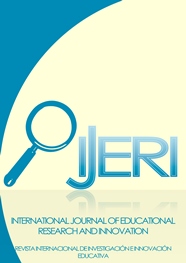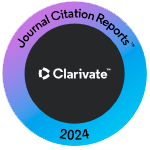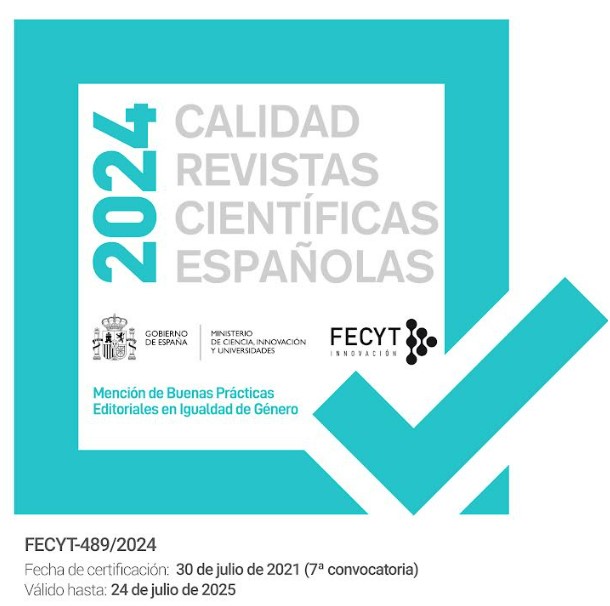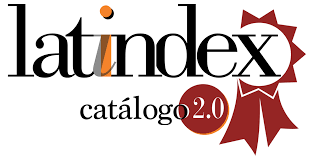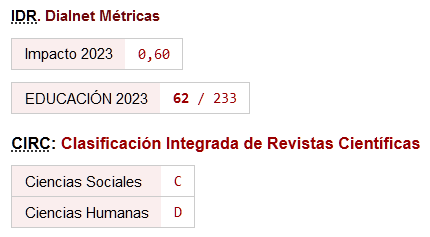El impacto de la formación para el programa de concienciación de la tecnología IoT en las universidades de Arabia Saudí
DOI:
https://doi.org/10.46661/ijeri.4914Palabras clave:
Entrenamiento, IoT, elearning IoT en salud, IoT en agricultura, ciudad inteligenteResumen
Hoy en día, Internet of Things (IoT) ha estado haciendo cambios drásticos en el aprendizaje electrónico y otros campos de nuestra vida cotidiana, como los sectores de la salud, la agricultura, el transporte, los negocios y el comercio y diversos servicios de ingeniería. Se pronostica que cincuenta mil millones de dispositivos IoT y seis mil millones de dispositivos móviles estarán en esta tierra en 2020. Las industrias de todo el mundo planean implementar IoT, ya que reduce los gastos en energía en un cincuenta por ciento y, finalmente, aumenta las ganancias. Por lo tanto, las instituciones académicas también deben trabajar en servicios habilitados para IoT para competir a nivel global. Los dispositivos IoT están conectando a las personas a la web, por lo que todos se acercan entre sí. El sector laboral se volvería más competitivo a partir de ahora, ya que muchas personas optan por el aprendizaje electrónico para obtener títulos fácilmente accesibles y las habilidades requeridas mientras continúan sus compromisos profesionales.
Esta investigación intenta como un paso preliminar para evaluar la capacitación básica de IoT para los estudiantes con el fin de aumentar su motivación para usar equipos basados en IoT, que es el requisito principal para un campus habilitado para IoT. Se realizó una prueba T para calcular la efectividad de la capacitación, ya que las universidades de Arabia Saudita buscan lanzar programas de IoT en sus diversos departamentos, también están motivadas para capacitaciones para preparar a su personal docente y estudiantes para cursos basados en IoT.
Descargas
Citas
Afshan S., Sobia I., Kamran A. & Nasir, M. (2012). Impact of training on employee performance: A study of telecommunication sector in Pakistan, Interdisciplinary Journal of Contemporary Research in Business, 4(6), 646-659.
Akinori K. & Hidehiko H. (2017, July 9-13). The analysis of training effects with virtual reality in simple task, 6thIIAI International Congress on Advanced Applied Informatics (IIAI-AAI), Japan, IEEE.
Alabi, & Olanike, A. (2010). E-education in Nigeria: Students' state of readiness for e learning at the University of Lagos. International Conference on Information Society, UK. 465-470.
Al-Emran M., Malik S.I., & Al-Kabi M.N. (2020). A survey of Internet of Things (IoT) in education: Opportunities and challenges. In A. E. Hassanien, R. Bhatnagar, N. E. M. Khalifa, & M. H. N. Taha (Eds.), Toward Social Internet of Things (SIoT): Enabling Technologies, Architectures and Applications (197-209). Springer: Cham.
Ali, U., Calis, C. (2019). Centralized Smart Governance Framework Based on IoT Smart City Using TTG-Classified Technique, IEEE 16th International Conference on Smart Cities: Improving Quality of Life Using ICT & IoT and AI (HONET-ICT), Malaysia. IEEE.
Almadani, B., Bin-Yahya, M., & Shakshuki, E. M. (2015). E-AMBULANCE: Real-time integration platform for heterogeneous medical telemetry system. Procedia Computer Science, 63, 400-407.
Ani, R., Krishna, S., Akhil, H., & Arun, U. (2018). An Approach Towards Building an IoT Based Smart Classroom, International Conference on Advances in Computing, Communications and Informatics (ICACCI), Bangalore. 2098-2102.
Annabeth A., Mirko P., & Troels A. (2019, June 17-21). Applying IoT as a leverage for business model innovation and digital transformation, Global IoT Summit (GIoTS), Denmark, IEEE .
Azamat Z. ; Zhulduz S. ; Rassim S. & Zhazira K. (2017, November 14-16). IoT smart campus review and implementation of IoT applications into education process of university, 13th International Conference on Electronics, Computer and Computation (ICECCO), Nigeria. DOI:10.1109/icecco.2017.8333334
Baranwal, T., Nitika, & Pateriya, P.K. (2016). Development of IoT based smart security and monitoring devices for agriculture. 2016 6th International Conference - Cloud System and Big Data Engineering (Confluence), IEEE. 597-602.
Chandra, N., Khatri, S.K.,, Som, S. (2019). Business models leveraging IoT and cognitive computing, Amity International Conference on Artificial Intelligence (AICAI), India. IEEE.
Chaudhary, S., Bhise, M., Banerjee, A., Goyal, A., & Moradiya, C. (2015, January 6-10). Agro Advisory System for Cotton Crop. AGRINETS Workshop, COMSNETS. IEEE.
Conlon, S. J., Hale, G. J., Lukose, S., & Strong, J. (2016). Information extraction agents for service-oriented architecture using web service systems: A framework, Data Processor for Business Education, 74-83.
Connected vehicles in smart cities: The future of transportation. (2018, November 16). Interesting Engineering. Retrieved from https//interestingengineering.com
Duangsuwan, S., Takarn, A., Nujankaew, R., & Jamjareegulgarn, P. (2018). A Study of Air Pollution Smart Sensors LPWAN via NB-IoT for Thailand Smart Cities 4.0, 10th International Conference on Knowledge and Smart Technology (KST),Chiang Mai, Thailand. IEEE.
Fernandes, C. O., Lucena, C. J. P., Lucena, C. A. P, & Azevedo, B. A. (2019). Enabling a smart and distributed communication infrastructure in healthcare, In Chen, Y.W., Zimmermann, A., Howlett, R.J., & Jain, L.C. (Eds.), Innovation in Medicine and Healthcare (435-446), Springer.
Gonge, S. S., Joshi, P. S., Kuche, P. R., Chopade, R. M. (2017). Education technology used in education for making student outcomes of engineering graduates, International Conference on Advances in Computing, Communications and Informatics (ICACCI), Singapore. IEEE.
Hamida, E. B., Alam, M. M., Maman, M., Denis, B., D’Errico, R. (2014). Wearable body-to-body networks for critical and rescue operations—The CROW 2 project, Proc. IEEE 25th Annu. Int. Symp. Pers. Indoor Mobile Radio Commun. (PIMRC) (2145-2149). IEEE.
Huang, Y. & He, L. Z (2016). Automatic generation of short answer questions for reading comprehension assessment, Natural Language Engineering, 22(3), 457.
International Telecommunication Union. (2015). Internet of Things Global Standards Initiative (IoT-GSI), Retrieved from http://www.itu.int/en/ITUT/gsi/iot/Pages/default.aspx
Ishak, I., Rahman, S. A., Hamdan, H., Sidi, F. (2017). Merit2U: An IoT-based merit point management system for university students' hostel application, IEEE International Symposium on Consumer Electronics (ISCE), Kuala Lumpur. DOI: 10.1109/ISCE.2017.8355554
Jeong, J.S., Han, O., & You, Y. Y. (2016). A design characteristics of smart healthcare system as the IoT Application, Indian Journal of Science and Technology, 9(37), 1-8.
Ma, J., Feng, S., Li, X., Zhang, X., & Zhang, D. (2019). Research on the Internet of Things architecture for Intelligent Passenger Transportation Services and its application, 4th International Conference on Electromechanical Control Technology and Transportation (ICECTT), Guilin, China. IEEE. DOI: 10.1109/ICECTT.2019.00051
Mangara, B. T. (2019). Class attendance and performance of undergraduate electronic engineering students: exploring the effects of gender, Southern African Universities Power Engineering Conference/Robotics and Mechatronics/Pattern Recognition Association of South Africa (SAUPEC/RobMech/PRASA), South Africa. IEEE.
Mathew, P. S., Pillai, A.S., & Palade, V. (2018). Applications of IoT in Healthcare, Springer International Publishing: AG, 263-287.
McLaren, D., Agyeman, J. (2015). Sharing cities: A case for truly smart and sustainable cities. USA: MIT Press.
Mohanraj, I., Kirthika, Ashokumar & Naren, J. (2016). Field Monitoring and Automation using IOT in Agriculture Domain, Procedia Computer Science, 93, 931-939.
Musa, S. (2018). Smart Cities-A Road Map for Development, IEEE Potentials, 37 (2), 19-23. DOI: 10.1109/MPOT.2016.2566099
Nassazi, A. (2013). Effects of training on employee performance: Evidence from Uganda, VAASAN AMMATTIKORKEAKOULU, 57+2 Appendices.
Otoo, D. & Eric. (2012). The Effect of Training and Development on Employee Performance at ACCRA Polytechniq.[online] Available at: http://ir.knust.edu.gh/bitstream/123456789/4825/1/Eric%20Degraft-Otoo.pdf
Parijat, D. & Bagga, S. (2014). Victor Vroom’s Expectancy Theory of Motivation: An evaluation, International Research Journal of Business and Management, VII(9), 1-8.
Puranik, V., Sharmila., Ranjan, A., Kumari, A. (2019). Automation in Agriculture and IoT, 4th International Conference on Internet of Things: Smart Innovation and Usages (IoT-SIU), IEEE.
Senthilkumar, R. D. (2017). Concept maps in teaching physics concepts applied to engineering education: An explorative study at the Middle East College, IEEE Global Engineering Education Conference (EDUCON), Sultanate of Oman. IEEE.
Shah, S.N., & Abuzneid, A.A. (2019). IoT Based Smart Attendance System (SAS) Using RFID. 2019 IEEE Long Island Systems, Applications and Technology Conference (LISAT), 1-6.
Srinivasan, A. (2018, September 5-7). IoT cloud based real time automobile monitoring system, 3rd IEEE International Conference on Intelligent Transportation Engineering (ICITE), Singapore. IEEE. DOI: 10.1109/ICITE.2018.8492706
Sudha, K. L., Shinde, S., & Abdugani, A. (2015). Barcode based student attendance system, International Journal of Computer Applications, 119(2), 975- 981.
Sung, K. H., Noh, E. H., & Chon, K. H. (2017). Multivariate generalizability analysis of automated scoring for short answer items of social studies in large-scale assessment. ASIA PACIFIC EDUCATION REVIEW, 18(3), 425.
Tahir, N., Yousafzai, I., Jan, D. & Hashim, M. (2014). The Impact of training and development on employees performance and productivity: A case study of United Bank Limited in Peshawar City, KPK, Pakistan. International Journal of Academic Research in Business and Social Sciences, 4(4), 86-98. DOI: 10.6007/IJARBSS/v4-i4/756
Tai, W. T. (2006). Effects of Training Framing, General Self-efficacy and Training Motivation on Trainees’ Training Effectiveness, Emerald Group Publishers, 35(1), 51-65.
Ugljanin, E., Stojanović, D. H., Kajan, E., Maamar, Z. (2017). Initiating and tracking social actions to adapt and improve smart city's business processes, 25thTelecommunication Forum (TELFOR), Belgrade. DOI: 10.1109/TELFOR.2017.8249429.
Wikipedia.org. (2015). Internet of Things.& lt; https://en.wikipedia.org/wiki/Internet_of_Things>
Zanella, A., & Bui, Nicola, Castellani, Angelo & Vangelista, Lorenzo & Zorzi, Michele. (2014). Internet of Things for smart cities. Internet of Things Journal, IEEE. DOI: 1.10.1109/JIOT.2014.2306328
Descargas
Publicado
Cómo citar
Número
Sección
Licencia
Derechos de autor 2022 Mogbel Aid K Alenizi

Esta obra está bajo una licencia internacional Creative Commons Atribución-NoComercial-SinDerivadas 4.0.

